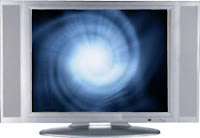The Nielsen nova.
Why TV commercials are about to get a lot better. Either way, it will drive up the cost per spot. The Nielsen numbers will also show another significant audience killer: nasty commercials. The car dealer screaming and pounding on the hood, the unintentional throwback to the sixties and the thousandth iteration of "Saleabration!" all send audiences stampeding out of the room or to another channel. That means they're not watching commercials that follow the dogs in the cluster. Likely outcomes? There's another factor that the second-by-second Nielsen numbers will bring into sharp focus: viewer loss within a commercial. After viewing MRI scans of test subjects viewing commercials, UCLA professor Joshua Freeman contends the longer the brain is engaged by a commercial the more effective that commercial is. So as commercials lose their audiences, they simultaneously lose effectiveness. (We're amazed that he needed brain scans to figure that out.) When advertisers and agencies are able to see precisely where in a commercial audiences are lost, they'll know what to correct to retain viewers. What it all adds up to is: commercials are going to get a lot better: The "better" we're referring to here is in the ability to retain audience. And that's obviously not the only significant metric. The objective of a commercial isn't to get people to watch the commercial. Or even like it. It's to get people to act, think or feel in the way the advertiser wants them to. But no commercial can accomplish that goal if it drives the entire audience away in the first three seconds. So retaining viewers in the first step to "better." Are more engaging, commercials the impossible dream? Not at all. Advertisers and agencies can create commercials which are every bit as appealing as the program content. Remember our posting about Super Bowl spots? The game got a 32.8 Nielsen rating. The commercials got a 32.1. More people replayed the commercials than the game on TiVo. Whether the brilliant new epoch of TV commercials is the blaze of glory that ends the television era or the beginning of a new golden age, it's going to be a great time for advertisers and agencies who have the discipline and talent to make the most of it.  The last thing a star does before exhausting its fuel and collapsing in upon itself is blaze forth in a massive burst of light and energy called a nova. Stars literally go out with a bang.
The last thing a star does before exhausting its fuel and collapsing in upon itself is blaze forth in a massive burst of light and energy called a nova. Stars literally go out with a bang.
If all the predictions of the demise of the thirty-second TV spots are correct, commercials may do the same. Because those "messages from our sponsors" are about to get a lot better. Fast.
Whether TV is about to go out in a blaze of glory or – more likely – begin a new golden age, advertisers, agencies and audiences have Nielsen to thank. Their new second-to-second ratings will be the engine behind the transformation of the commercial cluster.
That's because the new numbers won't just show who and how many are watching. They'll also show when people stop watching.
The standard length of programming in a half-hour of TV is now 22 minutes. That means commercials and on-air promos fill 8 minutes of every half hour. That's more than one-quarter of the total air time (26.67% to be exact). Some shows squeeze ten minutes of spots into each half hour. A stupefying 33.33% of air time!
The new Nielsen numbers will almost certainly show that one of two things happen during commercial clusters.
Audience members will leave the room for any activity that takes about as long as a typical commercial cluster: bio break, trip to the fridge, check e-mail, shift a load of laundry from the washer to dryer or whatever. They'll then return to the show. With second-by-second ratings, advertisers won't pay for the show's audience. They'll only pay for the much smaller audience of the commercial cluster.
Audience members will channel surf to see if a more entertaining option is available. If they find one they won't return. So not only will there be fewer viewers of the commercials, there will be fewer viewers of the next segment of the show. And even fewer at the next commercial cluster. So the loss of revenue will compound.


